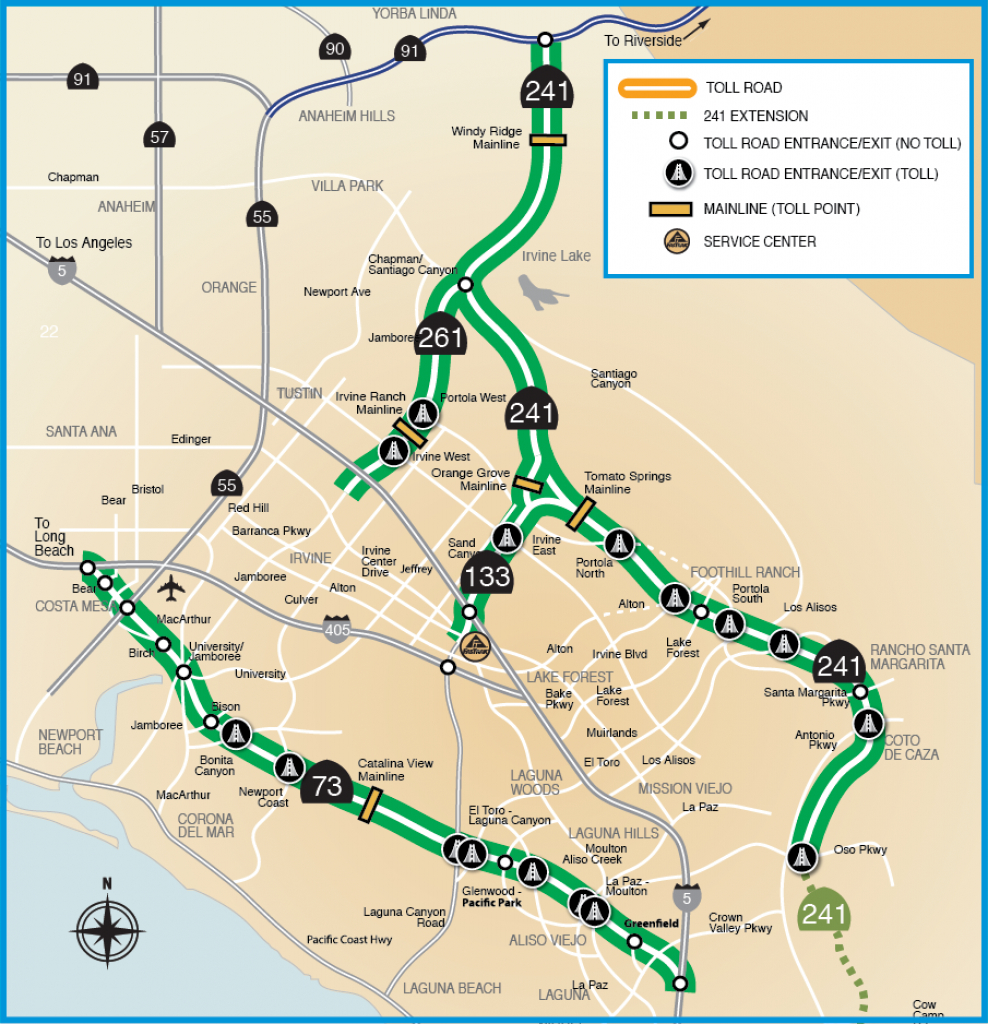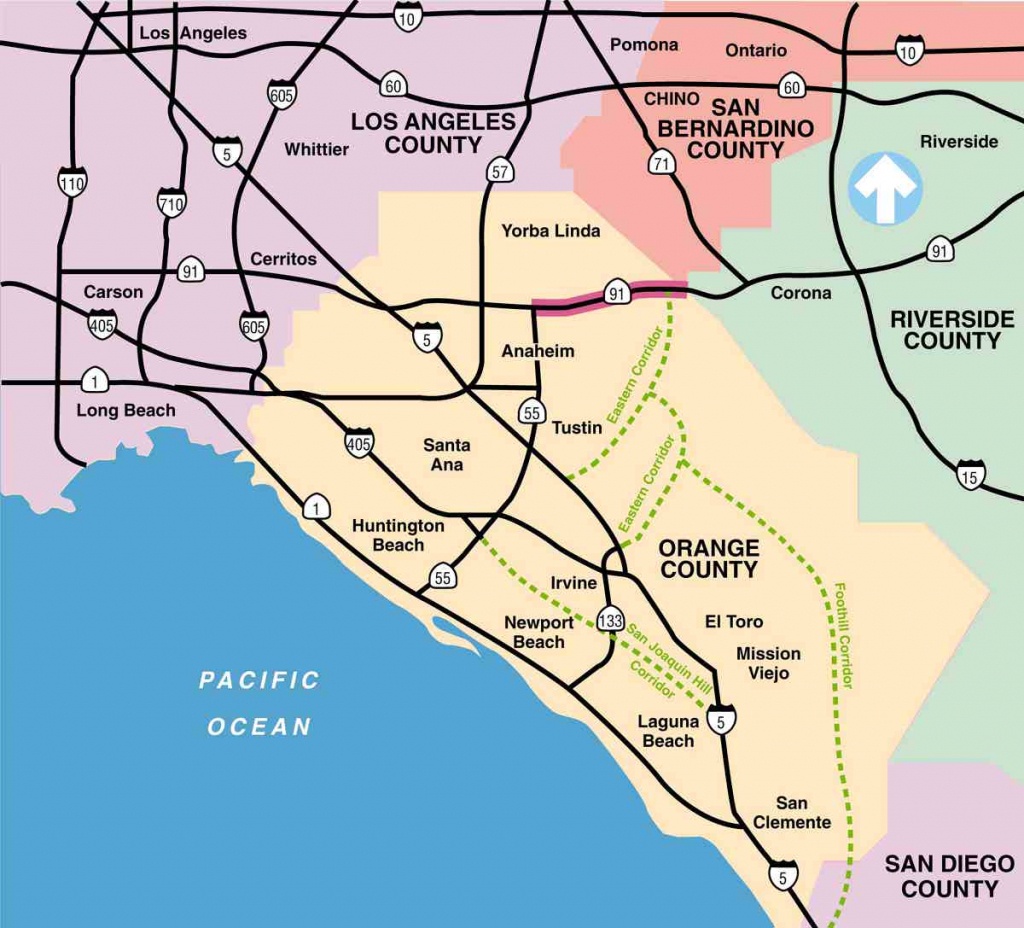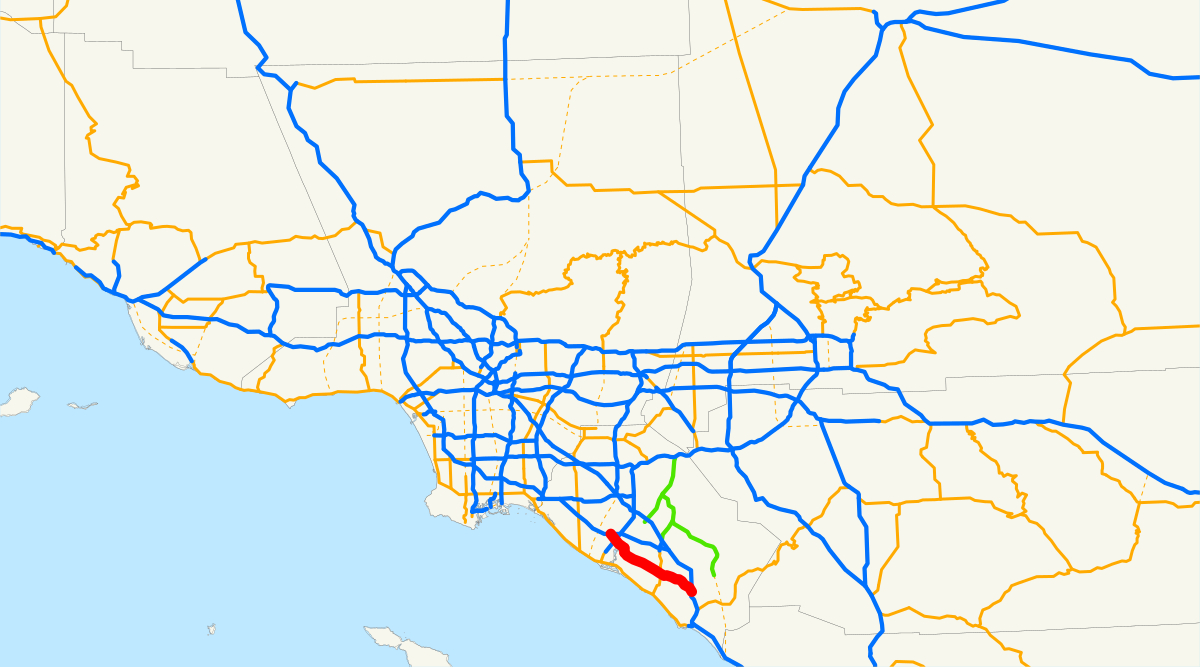Socal toll roads have become an essential part of modern transportation in Southern California, offering drivers a faster and more efficient way to navigate the bustling highways. As urban areas continue to grow, traffic congestion has become a significant challenge for commuters. To address this issue, toll roads have emerged as a practical solution, providing a smoother and less congested alternative to traditional highways. These roads not only save time but also contribute to reducing traffic jams, making them an attractive option for those who value convenience and efficiency. With numerous toll roads now available across Southern California, drivers can enjoy a more streamlined commuting experience while supporting infrastructure development through toll fees.
Understanding how socal toll roads work is crucial for anyone looking to make the most of their daily commutes. These roads are designed to offer a premium driving experience, often featuring fewer exits and entrances, which helps maintain a steady flow of traffic. Additionally, they are equipped with advanced technology, such as electronic toll collection systems, which eliminate the need for cash payments and make the process seamless. As more people become aware of the benefits of using toll roads, their popularity continues to rise, making them an integral part of the region's transportation network. Whether you're a daily commuter or an occasional traveler, socal toll roads provide a reliable option for navigating the busy streets of Southern California.
While socal toll roads offer numerous advantages, it's important to consider the costs associated with using them. Drivers are required to pay toll fees, which can vary based on factors such as the time of day, the distance traveled, and the type of vehicle. However, many users find that the convenience and time saved outweigh the additional expense. Furthermore, the revenue generated from toll fees is often reinvested into maintaining and improving the infrastructure, ensuring that these roads remain in excellent condition. As Southern California continues to grow, the role of toll roads in managing traffic congestion will only become more significant, making them an essential component of the region's transportation system.
Read also:Ausar Thompson
Table of Contents
- What Are Socal Toll Roads?
- What Are the Benefits of Using Socal Toll Roads?
- How Much Do Socal Toll Roads Cost?
- The Role of Technology in Socal Toll Roads
- Why Are Socal Toll Roads Less Congested?
- How Do Socal Toll Roads Impact the Environment?
- What Does the Future Hold for Socal Toll Roads?
- Frequently Asked Questions
What Are Socal Toll Roads?
Toll roads in Southern California, commonly referred to as socal toll roads, represent a network of highways designed to alleviate traffic congestion and provide drivers with a faster, more reliable travel option. These roads are typically managed by local transportation authorities and are equipped with state-of-the-art technology to ensure a seamless experience for users. Unlike traditional highways, toll roads are often less congested due to their limited access points and the implementation of toll fees, which help regulate traffic flow. This makes them an ideal choice for commuters seeking to avoid the frustration of heavy traffic during peak hours.
Socal toll roads are strategically located throughout the region, connecting major cities and key destinations. They are designed to complement existing highway systems, offering an alternative route for drivers who are willing to pay a fee for a more efficient journey. The construction and maintenance of these roads are often funded through toll revenues, ensuring that they remain in optimal condition. Additionally, toll roads are frequently updated with the latest advancements in transportation technology, such as electronic toll collection systems and real-time traffic monitoring, to enhance the driving experience. As a result, socal toll roads have become an integral part of the region's transportation infrastructure, providing a valuable service to the community.
For drivers, understanding the basics of socal toll roads is essential for maximizing their benefits. This includes familiarizing oneself with the various routes available, the associated toll fees, and the technology used to manage these roads. By doing so, commuters can make informed decisions about when and how to use toll roads, ultimately improving their overall travel experience. As the demand for efficient transportation solutions continues to grow, socal toll roads will undoubtedly play a crucial role in shaping the future of Southern California's highways.
What Are the Benefits of Using Socal Toll Roads?
The primary advantage of using socal toll roads is the significant reduction in travel time. Drivers who choose to use these roads can bypass the heavy traffic commonly experienced on traditional highways, allowing them to reach their destinations more quickly. This is particularly beneficial for commuters who travel during peak hours, as it helps them avoid the stress and frustration associated with sitting in traffic. Additionally, the predictable travel times offered by toll roads make them an excellent option for those who need to adhere to strict schedules, such as business professionals or individuals with time-sensitive appointments.
Another key benefit of socal toll roads is the improved driving experience they provide. These roads are typically wider and better maintained than regular highways, offering a smoother and more comfortable ride. The limited number of access points also contributes to a more consistent traffic flow, reducing the likelihood of sudden stops and starts. Furthermore, toll roads are often equipped with advanced safety features, such as better lighting and signage, which enhance driver visibility and reduce the risk of accidents. As a result, users can enjoy a safer and more enjoyable journey when traveling on socal toll roads.
Finally, socal toll roads contribute to the overall development and improvement of the region's transportation infrastructure. The revenue generated from toll fees is often reinvested into maintaining and upgrading these roads, ensuring that they remain in excellent condition. This not only benefits current users but also supports future growth and expansion of the transportation network. By choosing to use toll roads, drivers are actively contributing to the improvement of Southern California's highways, making them a more sustainable and reliable option for everyone.
Read also:Kenny Smith
How Do Socal Toll Roads Improve Traffic Flow?
Socal toll roads play a vital role in improving traffic flow by regulating the number of vehicles on the road at any given time. This is achieved through the implementation of toll fees, which act as a deterrent for drivers who may not be willing to pay the additional cost. As a result, only those who value the convenience and efficiency of toll roads will use them, leading to a more balanced distribution of traffic across the highway network. This helps prevent overcrowding on traditional highways, making them less congested and more manageable for all users.
In addition to toll fees, socal toll roads are designed with fewer access points, which further contributes to a smoother traffic flow. By limiting the number of entrances and exits, these roads can maintain a steady pace of traffic, reducing the likelihood of bottlenecks and accidents. This design also allows for more efficient use of the available road space, ensuring that vehicles can travel at a consistent speed without unnecessary interruptions. Overall, the combination of toll fees and strategic road design makes socal toll roads an effective solution for managing traffic congestion in Southern California.
What Are the Key Features of Socal Toll Roads?
- Electronic toll collection systems for seamless payment
- Advanced traffic monitoring technology for real-time updates
- Strategic placement of access points to maintain traffic flow
- Regular maintenance and upgrades to ensure optimal road conditions
How Much Do Socal Toll Roads Cost?
The cost of using socal toll roads varies depending on several factors, including the time of day, the distance traveled, and the type of vehicle. Toll fees are typically higher during peak hours when demand is greatest, encouraging drivers to consider alternative travel times or routes. This dynamic pricing model helps manage traffic flow and ensures that toll roads remain an efficient option for commuters. Additionally, the cost of using toll roads may differ based on the specific route chosen, with longer distances generally resulting in higher fees.
For drivers, it's important to understand how toll fees are calculated and what factors may influence the final cost. Many socal toll roads utilize electronic toll collection systems, which allow users to pay their fees automatically without stopping at a toll booth. This not only speeds up the payment process but also reduces congestion at access points. Furthermore, some toll roads offer discounts or incentives for frequent users, making them a more affordable option over time. By familiarizing themselves with the pricing structure, drivers can better plan their journeys and budget accordingly.
Despite the additional cost, many users find that the benefits of using socal toll roads outweigh the expense. The time saved, the improved driving experience, and the contribution to infrastructure development are all factors that make toll roads a worthwhile investment for many commuters. As the region continues to grow, the importance of efficient transportation solutions like toll roads will only increase, making them an essential component of Southern California's highway system.
How Are Toll Fees Determined?
Toll fees on socal toll roads are determined through a combination of factors, including the time of day, the distance traveled, and the type of vehicle. During peak hours, when traffic congestion is highest, toll fees are typically increased to encourage drivers to consider alternative travel times or routes. This dynamic pricing model helps regulate traffic flow and ensures that toll roads remain an efficient option for commuters. Additionally, the cost of using toll roads may vary based on the specific route chosen, with longer distances generally resulting in higher fees.
Electronic toll collection systems play a crucial role in determining and collecting toll fees. These systems use advanced technology to calculate the appropriate fee based on the factors mentioned above and automatically deduct the amount from the driver's account. This not only simplifies the payment process but also reduces the likelihood of errors or disputes. Furthermore, some toll roads offer discounts or incentives for frequent users, making them a more affordable option over time. By understanding how toll fees are determined, drivers can better plan their journeys and budget accordingly.
The Role of Technology in Socal Toll Roads
Technology plays a pivotal role in the operation and management of socal toll roads, ensuring a seamless and efficient driving experience for users. One of the most significant advancements in this area is the implementation of electronic toll collection systems, which allow drivers to pay their fees automatically without stopping at a toll booth. This not only speeds up the payment process but also reduces congestion at access points, contributing to a smoother traffic flow. Additionally, these systems provide users with real-time updates on their account balances and transaction history, making it easier to manage their toll road usage.
Another important aspect of technology in socal toll roads is the use of advanced traffic monitoring systems. These systems utilize sensors and cameras to collect data on traffic conditions, providing valuable insights into congestion patterns and travel times. This information is then used to adjust toll fees dynamically, ensuring that traffic flow remains consistent and efficient. Furthermore, real-time updates on road conditions and potential delays are communicated to drivers through digital signage and mobile apps, allowing them to make informed decisions about their journeys. By leveraging technology, socal toll roads can offer a more reliable and predictable travel experience for users.
Finally, technology is essential for maintaining and improving the infrastructure of socal toll roads. Regular inspections and maintenance are conducted using advanced diagnostic tools, ensuring that these roads remain in optimal condition. Additionally, data collected from traffic monitoring systems is analyzed to identify areas for improvement, such as the need for additional lanes or upgraded safety features. By continuously investing in technology, socal toll roads can provide a safer and more efficient driving experience for all users, supporting the ongoing development of Southern California's transportation network.
Why Are Socal Toll Roads Less Congested?
Socal toll roads are less congested than traditional highways due to a combination of factors, including the implementation of toll fees, strategic road design, and advanced traffic management systems. By charging a fee for usage, toll roads effectively regulate the number of vehicles on the road at any given time, preventing overcrowding and maintaining a steady traffic flow. This pricing model encourages drivers to consider alternative travel times or routes, reducing the likelihood of bottlenecks and accidents. Furthermore, the limited number of access points on toll roads contributes to a more consistent traffic flow, minimizing the disruptions caused by frequent stops and starts.
In addition to toll fees and road design, socal toll roads utilize advanced traffic monitoring systems to ensure optimal conditions for drivers. These systems collect real-time data on traffic conditions, allowing authorities to make informed decisions about managing traffic flow and addressing potential issues before they become major problems. This proactive approach helps maintain a smooth and efficient driving experience for users, further reducing congestion on these roads. By combining these strategies, socal toll roads are able to offer a more reliable and predictable travel option for commuters.
Finally, the maintenance and improvement of socal toll roads play a crucial role in keeping them less congested. Regular inspections and upgrades ensure that these roads remain in excellent condition, reducing the likelihood of accidents and delays caused by poor road surfaces or inadequate signage. Additionally, the revenue generated from toll fees is often reinvested into infrastructure development, supporting the ongoing improvement of the transportation network. As a result, drivers can enjoy a safer and more efficient journey when using socal toll roads, making them an attractive option for navigating the busy streets of Southern California.
How Does Limited Access Contribute to Reduced Congestion?
The limited number of access points on socal toll roads is a key factor in reducing congestion and maintaining a steady traffic flow. By restricting the number of entrances and exits, these roads can prevent the frequent stops and starts that often lead to bottlenecks and accidents on traditional highways. This design allows vehicles to travel at a


